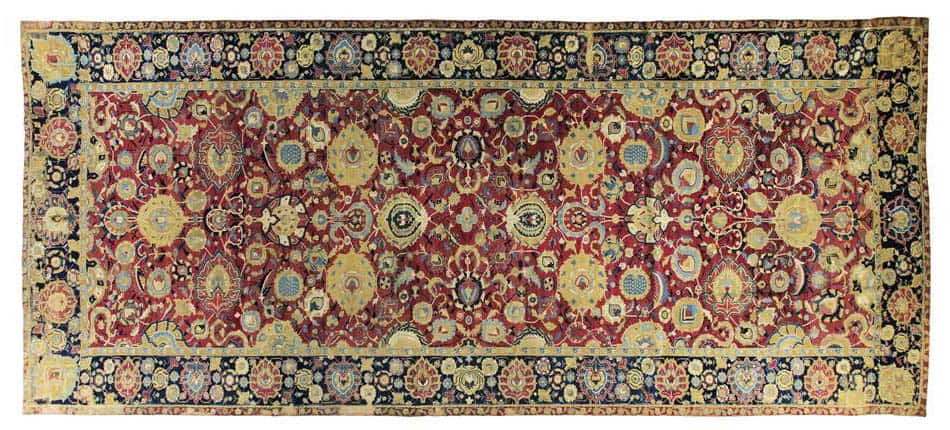Rugs have been more than just floor coverings; they have served as artistic masterpieces, symbols of status, and cultural legacies. Among these, Persian rugs have held a particularly esteemed place. From the palatial halls of Persian royalty to the high-end showrooms of modern interior design, the evolution of expensive rugs is a rich narrative that intertwines craftsmanship, heritage, economics, and aesthetics.
The Origins: Royal Patronage and Cultural Significance
The story of luxury rugs begins in ancient Persia, modern-day Iran, where rug weaving dates back more than 2,500 years. Early Persian rugs were not merely utilitarian objects; they were expressions of art, identity, and spirituality. The nomadic tribes of Persia used natural materials like wool and silk, dyeing them with botanical colors to create intricate patterns that often held symbolic or religious significance.
However, it was during the Safavid Dynasty (1501–1736) that Persian rug-making entered its golden age. Under the reign of Shah Abbas I (1588–1629), royal workshops were established in cities like Isfahan, Tabriz, and Kashan. These workshops produced some of the most elaborate rugs ever seen, often commissioned for royal palaces or as diplomatic gifts. Silk rugs with gold and silver threads became a hallmark of luxury, and the labor-intensive process, sometimes taking years to complete a single rug—added to their value.
Rugs from this period, such as the famed Ardabil Carpet, were symbols of imperial grandeur. The Ardabil, now housed in the Victoria and Albert Museum in London, exemplifies the harmony, precision, and spiritual artistry that made Persian rugs coveted worldwide.
Technical Mastery: What Makes a Rug Expensive?
The high cost of luxury rugs is not arbitrary; it’s a reflection of time, technique, and materials. The most expensive rugs are typically hand-knotted rather than machine-made. A hand-knotted Persian rug may have over 1,000 knots per square inch, and a single rug can take months—or even years—for skilled artisans to complete.
Materials also matter. High-end rugs often use wool from highland sheep, which is more resilient and takes dye more richly. Silk rugs, prized for their sheen and softness, are even more luxurious—and expensive. Natural dyes made from plants, insects, and minerals not only enhance visual appeal but also age beautifully, unlike synthetic dyes, which can fade.
The pattern and origin of the rug significantly affect its price. Iconic styles such as Tabriz, Qom, Kashan, and Nain have become synonymous with luxury, each boasting distinct motifs—from floral medallions to intricate geometric forms.
Global Influence and Adaptation
By the 17th century, Persian rugs had become coveted items across Europe and Asia. Traders and travelers carried them to Italy, France, India, and China. In the courts of the Ottoman Empire and Mughal India, Persian-style rugs inspired local adaptations and new weaving traditions. Meanwhile, European aristocrats used Persian rugs as table covers or wall hangings, appreciating them more as art than function.
Western demand influenced the evolution of rug designs and production techniques. By the 19th century, the rise of colonialism and international trade introduced Persian rugs to broader markets. European companies, particularly in Britain and Germany, began commissioning rugs from Persian weavers, influencing everything from size to color palette to cater to Western tastes.
The Rise of Modern Rug Luxury
The 20th and 21st centuries saw a shift from traditional hand-woven techniques to mass production. While machine-made rugs made fine floor coverings more accessible, they also highlighted the exclusivity of handcrafted rugs. In a world flooded with reproductions, genuine hand-knotted Persian rugs became a sign of discerning taste.
Luxury interior designers and architects began to incorporate these rugs into upscale residences, commercial spaces, and even art galleries. Celebrities, collectors, and design connoisseurs sought antique rugs not only for their beauty but also for their investment value. A rare Persian rug can appreciate over time, much like fine art.
The most expensive rug ever sold, the Clark Sickle-Leaf Carpet, a 17th-century Persian masterpiece, fetched $33.7 million at Sotheby’s in 2013. This record-breaking sale underscored the enduring allure of Persian rugs as both artistic treasures and luxury commodities.
Innovation Meets Tradition
Today, expensive rugs exist at the intersection of tradition and innovation. Contemporary designers collaborate with traditional weavers to create bespoke rugs that blend old-world craftsmanship with modern aesthetics. Brands like Jan Kath, Fort Street Studio, and The Rug Company have elevated rug-making into the realm of haute couture, producing limited-edition pieces that command five- or six-figure price tags.
These modern luxury rugs often draw on a variety of influences—tribal, Persian, Scandinavian, even abstract expressionism. They experiment with textures, layering, and mixed materials, while still respecting the fundamental techniques that define quality weaving.
Technology, too, has a role. Digital design tools allow for precise pattern planning, and e-commerce platforms have made rare, high-end rugs accessible to global buyers. Yet, the essence remains the same: each rug is a labor of love, a story told in thread.
Sustainability and Ethical Luxury
In the current age of conscious consumerism, ethical production has become central to the luxury rug industry. Organizations such as GoodWeave work to ensure that rug-making communities are free from child labor and receive fair wages. Artisans are recognized not just as laborers but as cultural custodians.
Moreover, sustainability has gained importance. Natural dyes, biodegradable materials, and energy-efficient processes are now selling points for luxury rug makers. Some companies are even repurposing vintage rugs, re-dyeing or resizing them to suit contemporary tastes while preserving their heritage.
Conclusion
The journey of expensive rugs from the courts of Persian kings to the showrooms of modern design is a testament to the enduring power of craftsmanship, culture, and artistry. These rugs are not just decorative objects; they are heirlooms, investments, and expressions of identity.
Whether displayed in a minimalist New York loft or a Parisian château, a fine rug anchors a space, telling a story that spans continents and centuries. As long as there is appreciation for beauty, history, and human skill, the legacy of luxurious rugs—rooted in Persian royalty—will continue to evolve and inspire.





Comments